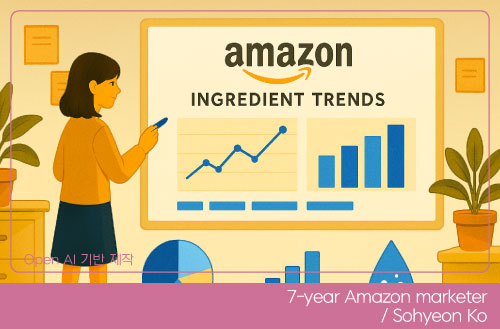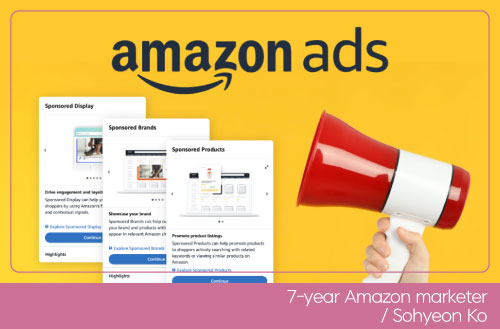

-
-
- 메일 공유
-
https://stories.amorepacific.com/en/amorepacific-how-amazon-opens-customers-wallets-the-secrets-behind-amazons-algorithms
How Amazon Opens Customers' Wallets
Amazon's Unyielding Focus on Customers #2(The Secrets Behind Amazon’s Algorithms)

Columnist
Go So-hyun Amazon Team


Source: Infinite Challenge
#INTRO
Encouraging Purchases = Showing Products Worth Buying
Let's start with an image from "Infinite Challenge," utterly unrelated to Amazon. Displaying this image on the AP-ON main page is expected to entice many who wish to go home to click on it. On a search-based platform like Amazon, what appears on the customer's screen—namely, being at the top of the search results page—is crucial. To achieve this, maximizing clicks through product names and images that appear on the search results page is essential, just like how I used this thumbnail to encourage more clicks among the six Amore Stories visible on the AP-ON main page.
However, merely attracting clicks is insufficient to ensure a spot at the top of Amazon’s search results. If users, enticed by the thumbnail, find the content uninteresting and leave quickly, it will be challenging to receive recommendations for ‘follow-up articles.’ (But you'll read until the end, right?) Hence, Amazon emphasizes how well those clicks translate into purchases.
Amazon identifies products customers will likely buy by prioritizing click-through and conversion rates as the most critical metrics. This column aims to share methods to drive more clicks and purchases through Amazon's algorithm, ultimately leading to higher visibility on the search results page.
1 Amazon = ALL ABOUT THE SEARCH
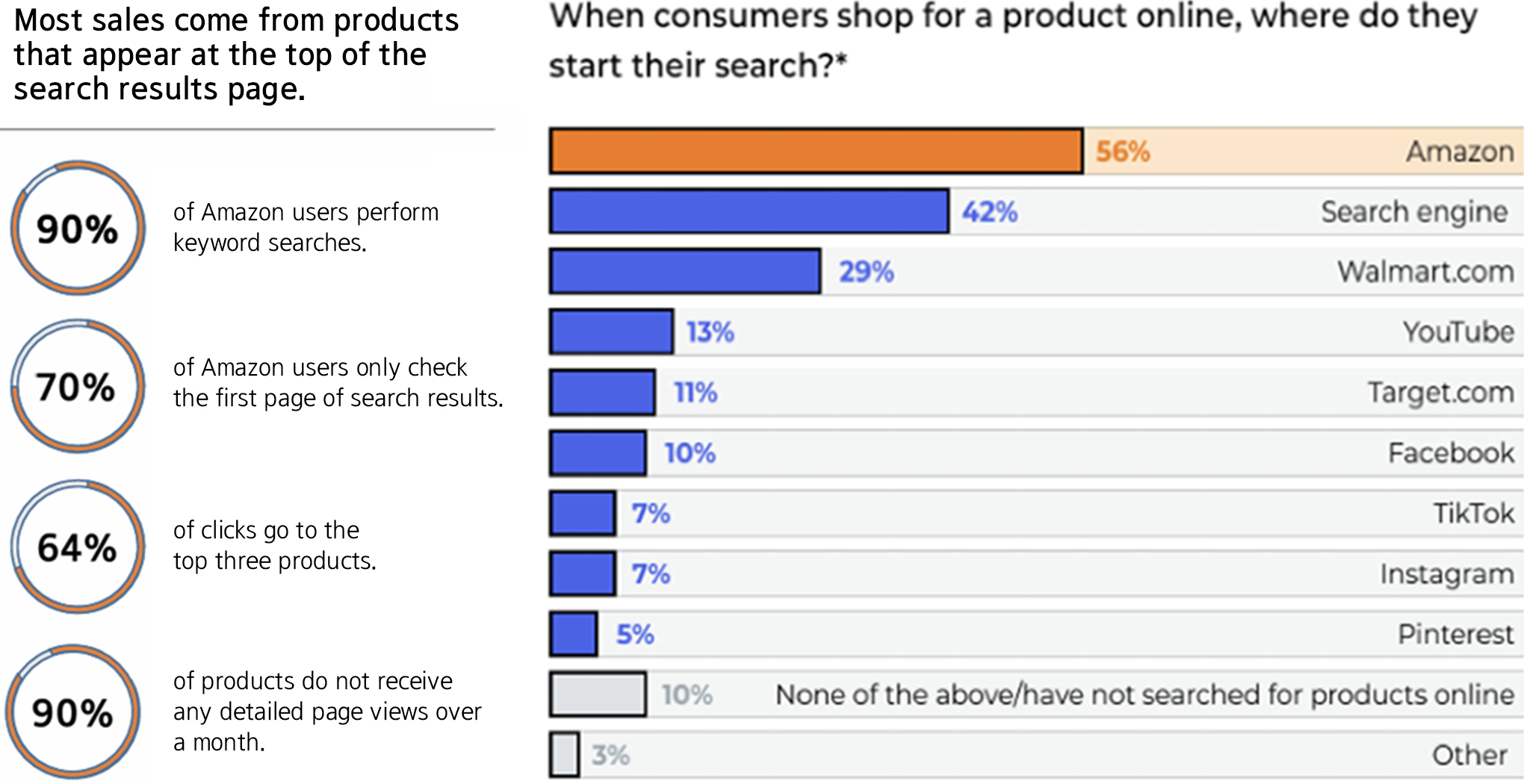
Source: (Left)BAIN REPORT, (Right)JUNGLE SCOUT
It is no secret that Amazon operates as a search-based platform. In fact, 56% of American consumers begin their shopping experience by searching on Amazon, and 90% of Amazon users use the search function. Of these, 70% only check the first page of search results. Moreover, 64% of clicks on the search results page go to the top three products. Therefore, ensuring that your product appears at the top of the search results is crucial. But what criteria does Amazon use to determine which products appear there?
2 The Rules of Amazon for Displaying Desirable Products
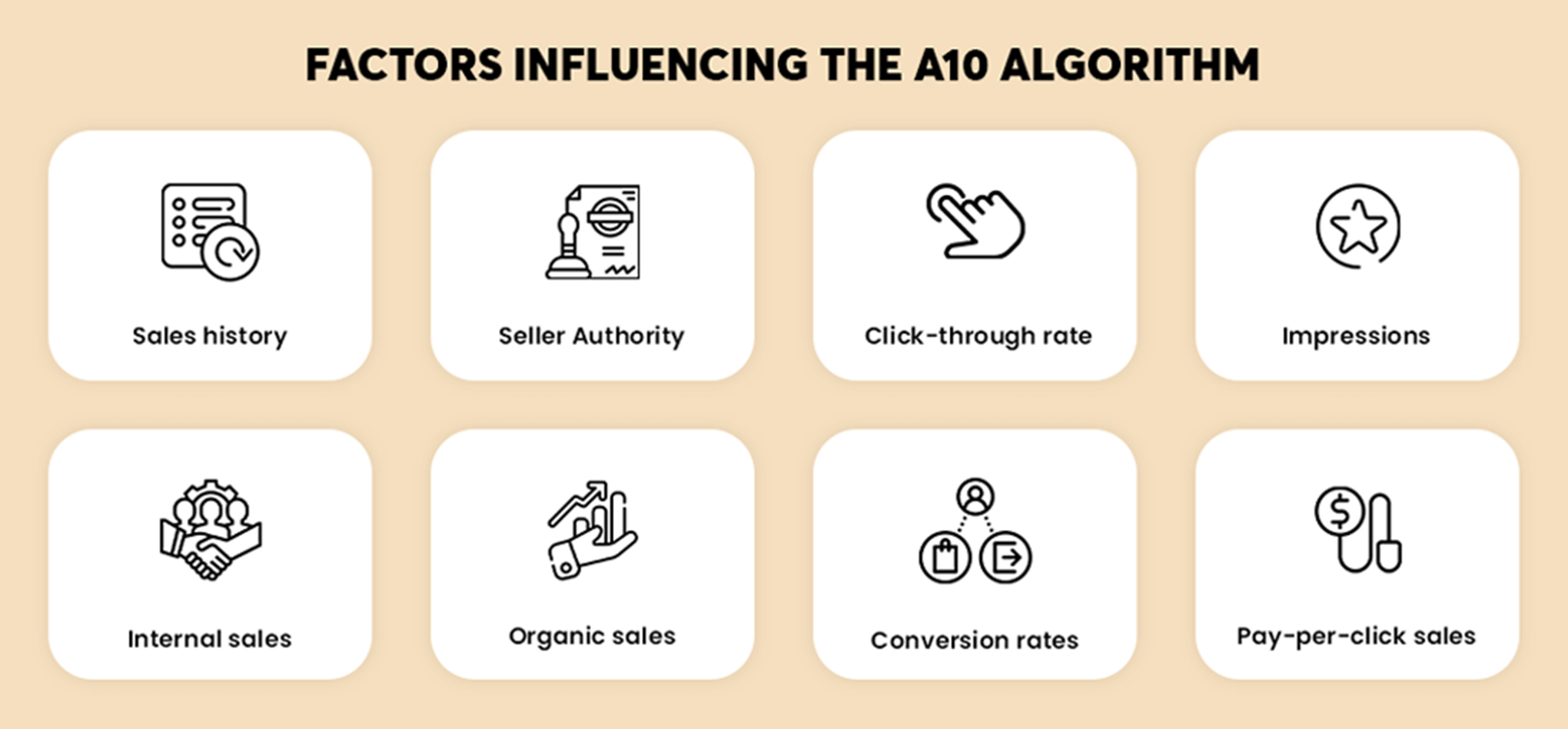
Source: Auxano Global Services
Amazon’s algorithm considers numerous, often indefinable, factors. It evaluates the product’s performance and the customer's purchase history, location, and behavioral patterns to provide personalized search results. Despite this complexity, specific algorithm components can be improved through the seller’s efforts:
- Sales history: The product’s sales record.
- Seller authority: Seller ratings (on Amazon, customers can leave reviews for products and sellers).
- Click-through rate: The rate at which product impressions convert to clicks (Clicks/Impressions*100).
- Impressions: The number of times a product is shown.
- Internal sales: Sales generated within Amazon through channels other than the search results page (e.g., Frequently Bought Together section on another product's detail page).
- Organic Sales: Sales that are not driven by advertisements.
- Conversion rate: The rate at which clicks convert to purchases (Purchases/Clicks*100).
- Pay-per-click sales: Sales generated through ads.
Among these various factors, the most important are the click-through and conversion rates. Amazon places more value on performance driven by organic exposure than paid advertisements. This is because the effectiveness of natural exposure can be measured by the probability that an impression leads to a click and a click leads to a purchase.
3 Amazon’s Rule for Displaying Desirable Products
– Click-Through Rate
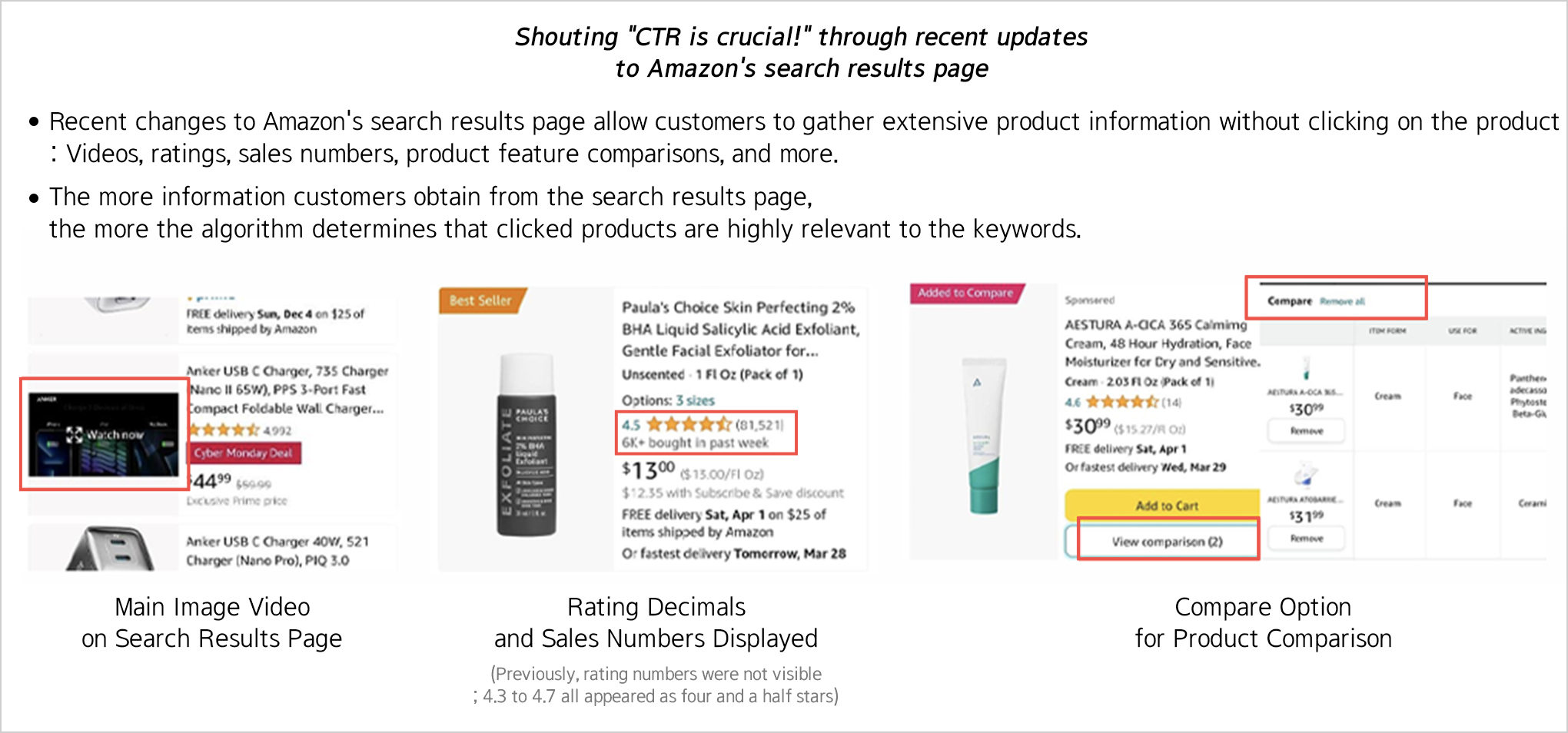
Although Amazon’s algorithm remains a closely guarded secret, known only to relevant internal departments, and Amazon has never explicitly told me, "Click-through rate is vital!", recent changes to the search results page make this abundantly clear. Previously, the product information on the search results page was limited. However, recent updates now allow customers to view product videos, past sales numbers, and detailed features. This increase in accessible information before clicking makes it crucial to enhance the appeal of products through various mechanisms to entice clicks.
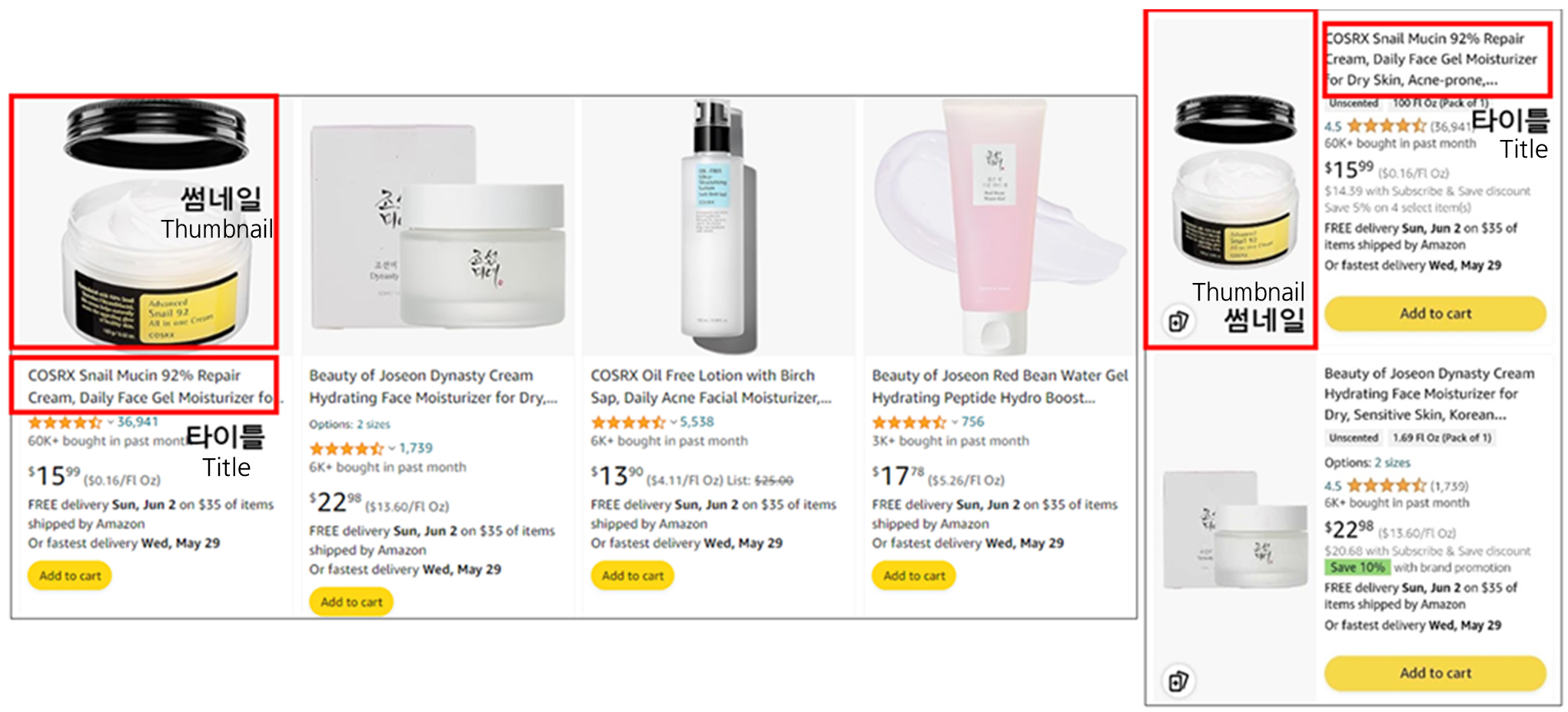
Amazon Search Results Page (Left)Desktop View (Right)Mobile View
Among the elements visible on the search results page, the thumbnail image and title are the first things consumers notice. How can we make these two critical components more attractive to improve the click-through rate?
Top Search Frequency Rankings for Keywords Including ‘Emulsion’ and ‘Lotion’ as of April Y24

Source: Amazon Seller Central
Top Search Frequency Rankings for Keywords Including ‘No Wash’ and ‘Leave In’ as of April Y24

Source: Amazon Seller Central
Products Displayed at the Top of the Search Results Page for ‘Sleeping Mask for Face’ and ‘Overnight Mask for Face’ as of May 27
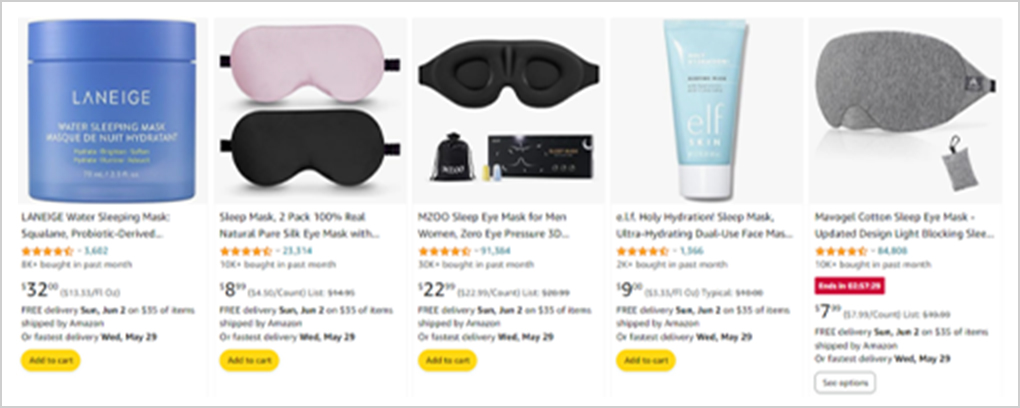
sleeping mask for face
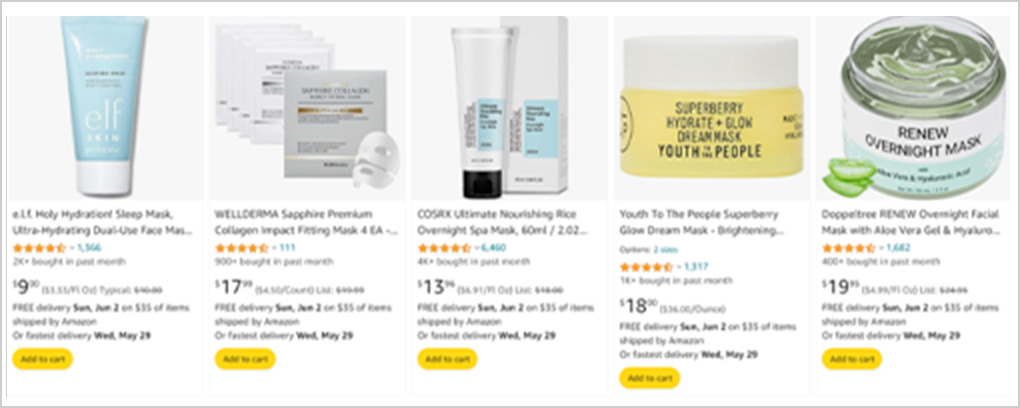
overnight mask for face
In the title, speaking not in our language but in the customer's language is essential. Customers' search terms for our products might differ from our expectations. For instance, instead of ‘emulsion,’ they search more frequently for ‘lotion.’ When looking for a conditioner that doesn't need rinsing, they prefer ‘leave in’ over ‘no wash.’ Additionally, while ‘sleeping mask’ attracts customers searching for sleep masks, using ‘overnight mask’ better aligns with those looking for skincare products like sleeping packs. Understanding and incorporating the keywords customers use to find our products into the title is crucial for encouraging clicks and improving the click-through rate.

In thumbnail images, it is important to highlight ‘desirability’ to catch the eye. Amazon's strict thumbnail regulations limit variations, but within these guidelines, you can add eye-catching elements by incorporating product textures in the background or objects if the ingredients are distinctive. Experimenting with different thumbnails to identify which images are most effective in driving clicks is essential to enhance your product’s appeal on Amazon.
4 Amazon’s Rule for Displaying Desirable Products – Conversion Rate
Now, let’s explore how to convert the clicks from those attractive titles and thumbnails into purchases. To construct a product detail page that drives sales, you must meet customers' general expectations when searching for specific keywords. Additionally, emphasize unique selling points that differentiate your product from competitors while addressing common complaints about rival products. This may sound straightforward, but let’s delve into the details.
1) Meeting Customer Expectations for Specific Keywords
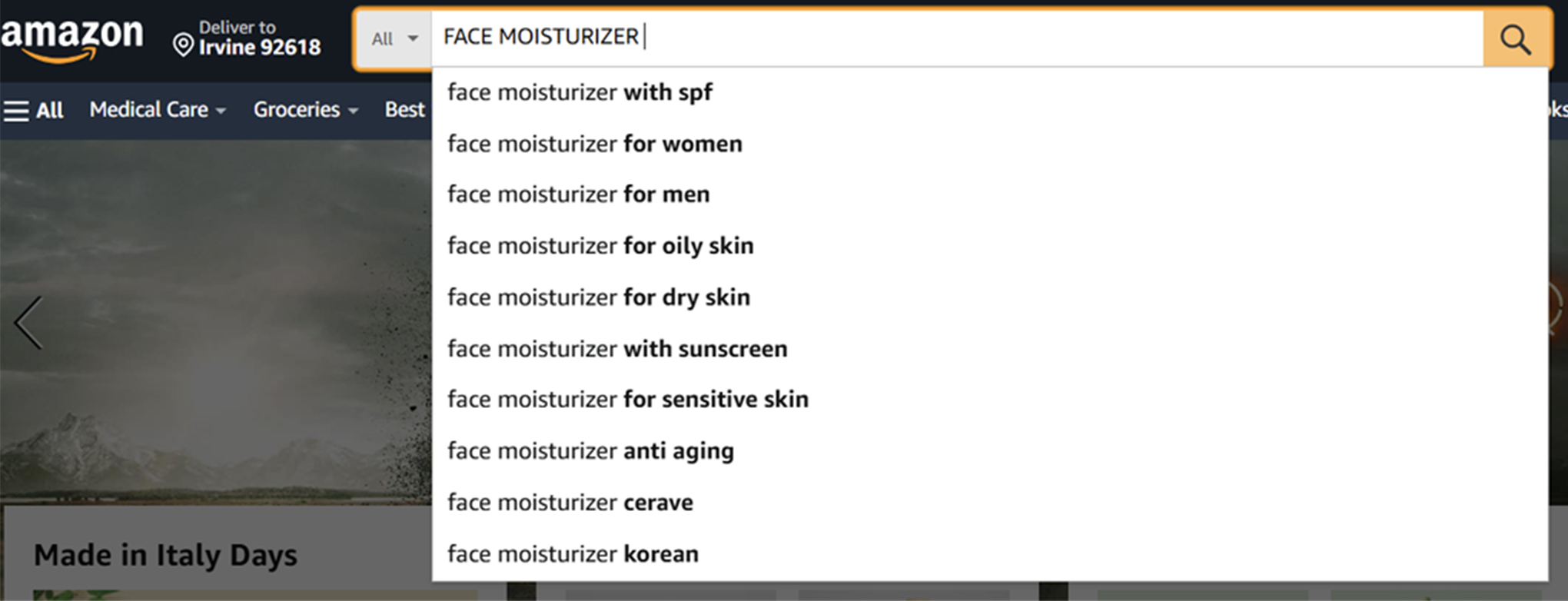
Suppose our target keyword is "FACE MOISTURIZER." When you search for "FACE MOISTURIZER" on Amazon, several auto-complete suggestions appear, reflecting commonly searched terms. These suggestions are ranked by search volume and often include specifics like "FOR~" or "WITH~," indicating detailed needs customers expect from a face moisturizer, such as SPF functionality, suitability for dry/oily skin, or anti-aging benefits. If your product possesses any of these features, it’s wise to highlight them on your product detail page.
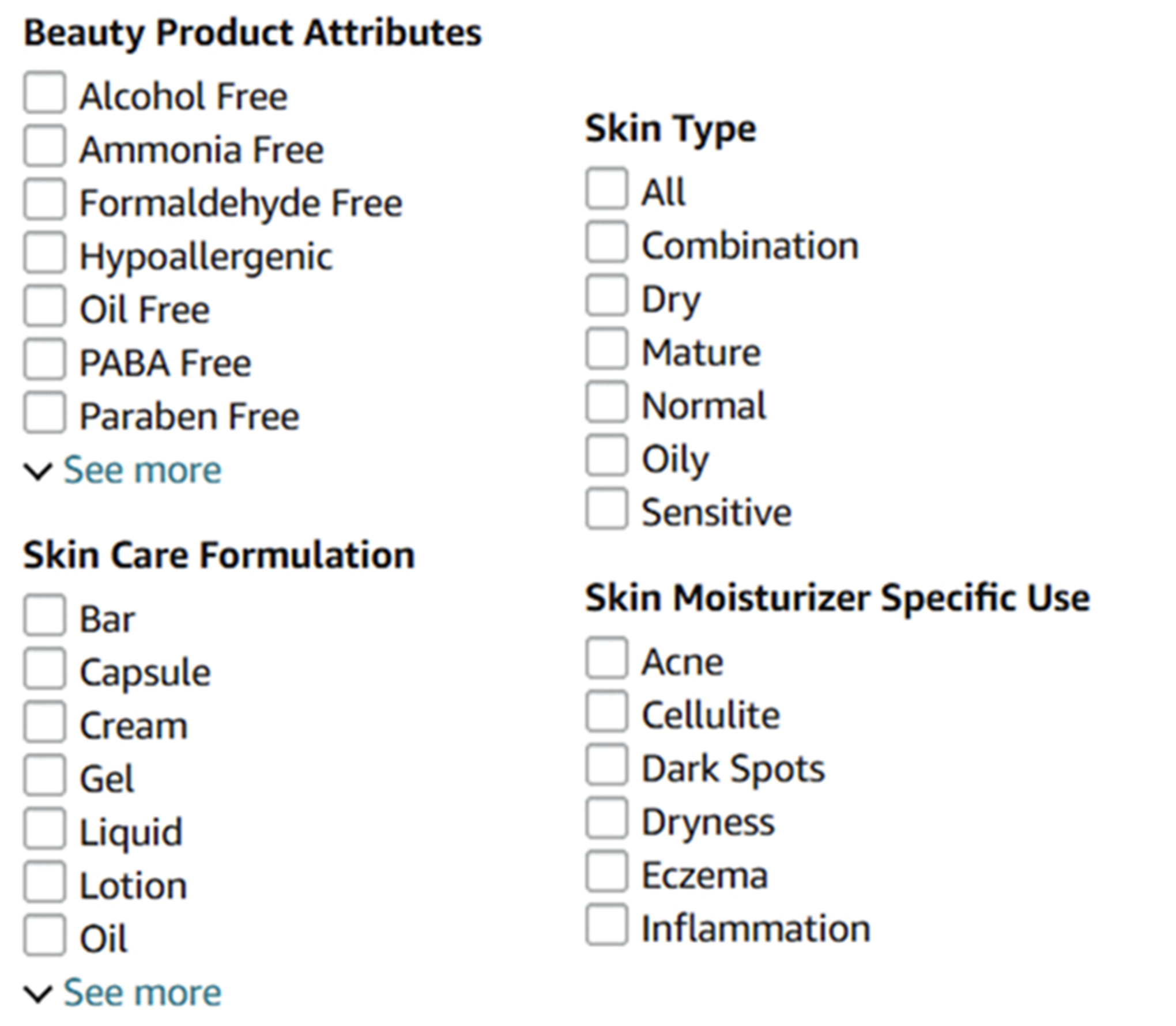
Another way to discern these needs is through the ‘search filter’ on the left side of the search results page (desktop view). The filter options vary depending on the keyword searched. This feature helps you understand what characteristics customers expect from a ‘FACE MOISTURIZER,’ such as being alcohol-free or anti-acne. Reflecting these expectations on your product detail page enhances visibility when filters are applied and improve conversion rates by meeting general needs.
2) Highlighting Your Unique Selling Points
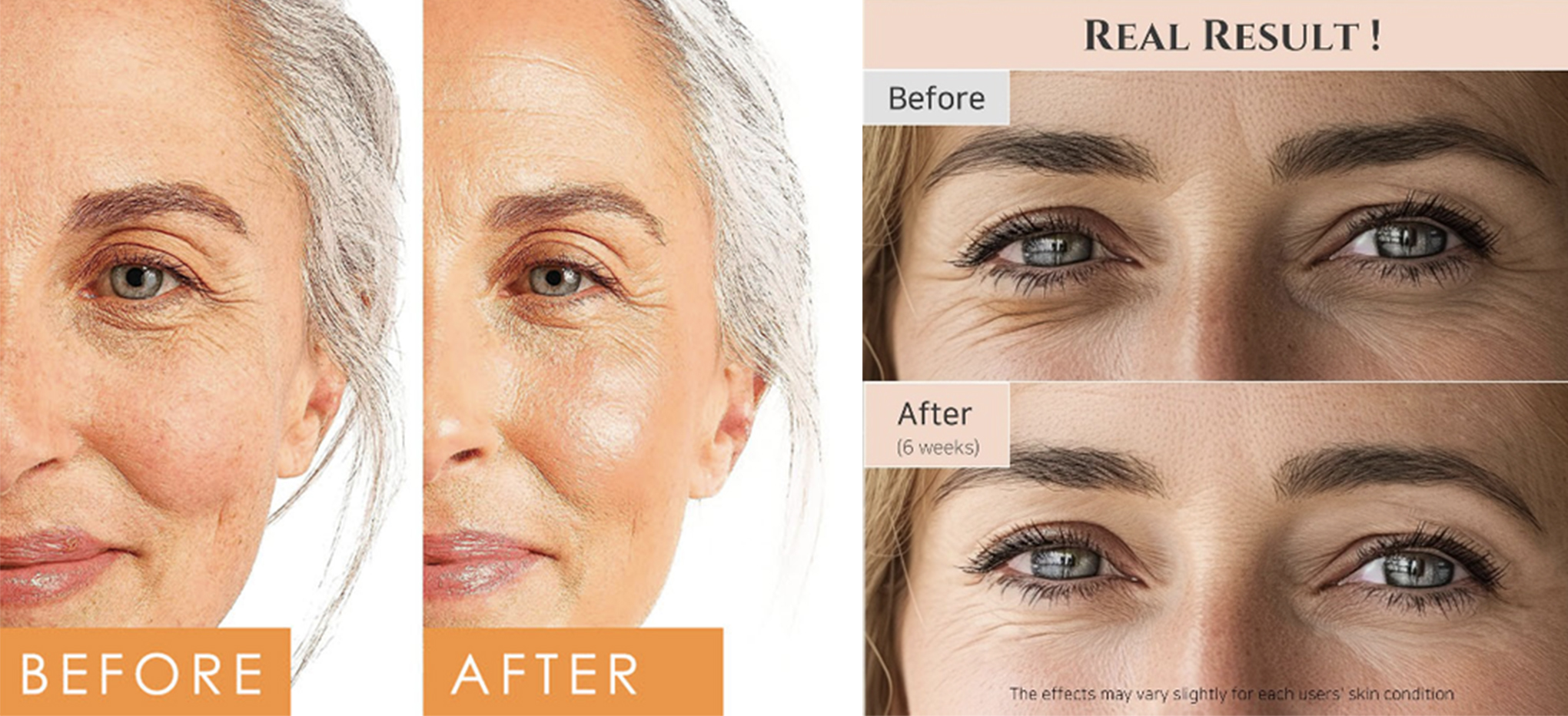
Source: (Left)Tree of Life Facial Serum Amazon image
(Right)Beauty of Joseon Eye Serum Amazon image
Like all e-commerce platforms, Amazon customers expect tangible benefits from products. Therefore, even if it feels a bit blunt, it’s crucial to use before-and-after images to clearly convey the expected results. Alternatively, impactful numbers and phrases, like "120-hour lasting hydration" or "77% rice extract," can create a lasting impression. Amidst thousands of products fulfilling general needs identified in step one, it is essential to highlight why customers should choose your product.
3) Mitigating Common Concerns
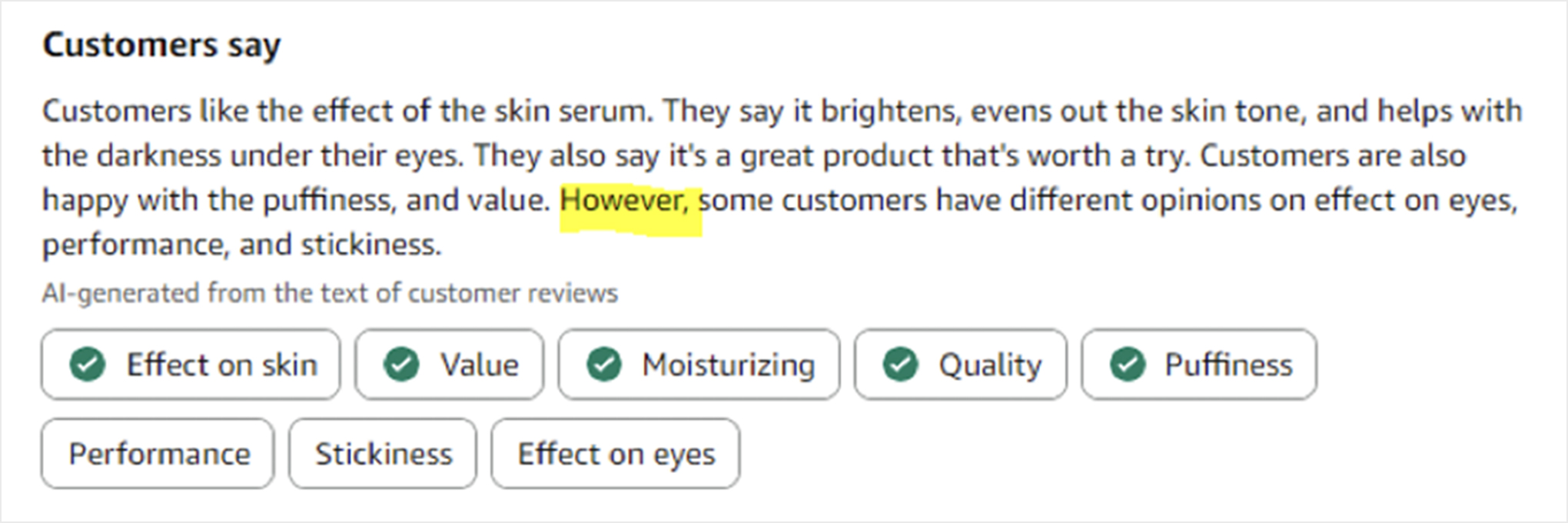
Good Molecules Yerba Mate Eye Gel Amazon reviews (above)

Neutrogena Retinol Eye Cream Amazon reviews (below)
To create a product detail page that stimulates purchase desire, it's beneficial to study reviews of competitors’ products. Examine what satisfies and disappoints customers about competing products sold under your target keywords. This process helps you understand what customers generally expect and what commonly disappoints them. By addressing the shortcomings of competitors' products and emphasizing that your product does not have these issues, you can establish a significant competitive advantage, rivaling even the most compelling Before & After images.
4) Ensuring Your Content Reaches Customers Effectively

Source: The Face Shop Ceramide Moisturizing Cream Amazon image
Fifty-two percent of Amazon US traffic comes from mobile devices. Therefore, it’s crucial to consider how your product appears on mobile screens. Although we often work on desktops, adopting a mobile-first perspective is vital. The reduced screen size significantly affects the readability of images and text. Content that is legible on a desktop might become too small to read comfortably on a mobile device. Always check how your product detail pages look on mobile devices to ensure that the messages intended for your customers are evident.
#OUTRO
The Importance of Solid Foundations
However, improving click-through and conversion rates through these efforts doesn’t result in an overnight surge in sales. The goal of these tasks is not immediate revenue spikes. Instead, just like a well-constructed apartment building with good soundproofing where people enjoy living for a long time, the aim is to prevent traffic from leaking elsewhere, encouraging purchases and fostering continuous brand engagement. This is why we invest the most time and care into this never-ending optimization process.
Increasing a product's conversion rate from selling 10 out of 100 clicks to selling 11 might seem insignificant. However, when combined with marketing efforts that generate 10,000 impressions and 1,000 clicks, a 1% improvement can make a substantial difference. Amazon is compelled to feature products that attract customer interest through clicks and purchases at the top of the search results page.
I hope this has provided insight into how Amazon selects products to tempt customers. Today, why not take a closer look at what products are being shown to you on your frequently used e-commerce platform?
-
Like
5 -
Recommend
4 -
Thumbs up
3 -
Supporting
3 -
Want follow-up article
3



